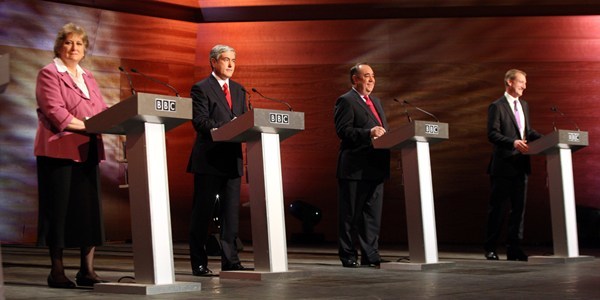A significant game changing moment is required in the next few days if the SNP is to be denied a second term in government.
Alex Salmond’s team will need to make a major mistake or suffer a very serious misfortune if their steady march towards victory is to be halted.
Such a moment was certainly not provided by the largely uneventful leaders’ debate held in Perth.
Issues such as education, job creation, efficiency savings and sectarianism were all discussed without there being any real sense of new ground being covered or the political landscape being changed.
Iain Gray’s performance was much improved on previous debates. The Labour leader even managed to successfully navigate a potentially tricky moment when he was asked to look Alex Salmond “right in the eye” and tell him why he should not be First Minister.
But it is also the case that the only time Alex Salmond looked at all discomfited came during a contribution from Lib Dem leader Tavish Scott.
Asked if he would support a referendum on independence, Mr Scott insisted the nationalists’ focus on the issue ensured the Holyrood election campaign was itself a vote on that very issue.
This is dangerous territory for Mr Salmond, as the SNP’s central ambition enjoys conspicuously less support from the public than the party does in general.
An overwhelming majority of the people who will put their cross beside the SNP box on Thursday would be horrified at the thought of an independent Scotland.
Labour have tried to capitalise on this after realising their initial strategy of scaring the Scottish public about the return of a Conservative Government in London was not working.
But you can’t help thinking that if the “vote SNP, vote for independence” message had been hit home more forcefully from the beginning of the campaign, we could be looking at a very different result.
